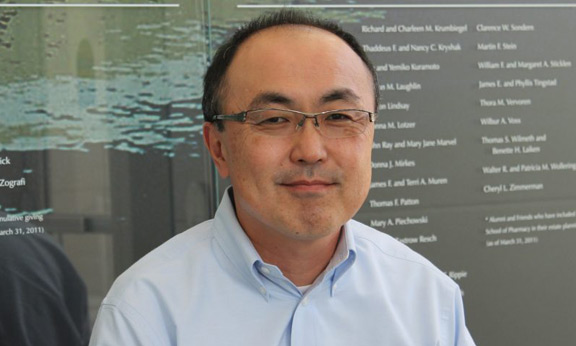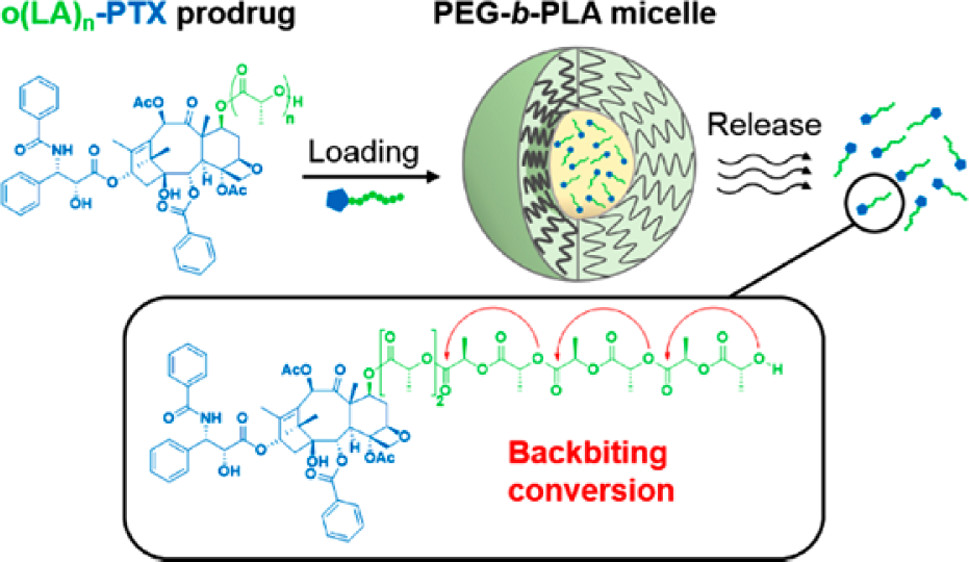
An article authored by Glen Kwon, professor, in the Pharmaceutical Sciences Division, along with Tony Tam, PhD graduate student, and Jieming Gao, post-doctoral researcher, both members of his lab, was published online in the July issue of the Journal of the American Chemical Society (JACS). With an impact factor of 13.038 in 2015, JACS is the world’s foremost journal for chemistry. Entitled “Oligo(lactic acid)n-Paclitaxel Prodrugs for Poly(ethylene glycol)-block-poly(lactic acid) Micelles: Loading, Release and Backbiting Conversion for Anticancer Activity,” the article outlines how Kwon as principle investigator and co-workers prepared novel oligo(lactic acid)n (o(LA)n))-paclitaxel (PTX) prodrugs that form stable injectable nanocarriers with poly(ethylene glycol)-block-poly(lactic acid) (PEG-b-PLA) micelles, gaining higher loading and slower release than PTX itself. After release, o(LA)n-PTX prodrug converted back into PTX by a novel backbiting reaction for anticancer activity. In an A549 non-small cell lung cancer xenograft model, o(LA)8-PTX prodrug-loaded PEG-b-PLA micelles caused tumor regression, whereas PTX-loaded PEG-b-PLA micelles at an equal dose only caused tumor growth inhibition. Further, o(LA)8-PTX prodrug caused less weight change in mice than PTX relative to a vehicle control. PTX is arguably the most important anticancer agent, used to treat breast, lung, ovarian and pancreatic cancers. Given that a PTX-loaded PEG-b-PLA micelle (Cynviloq™) is in a phase 3 clinical trial in a bioequivalence study with a nanoparticle albumin-bound paclitaxel (Abraxane®) in the U.S.A., findings on the o(LA)8-PTX prodrug-loaded PEG-b-PLA micelle are highly significant and serve as strong rationale for its evaluation in clinical trials. 